 Search by Keyword
|
"THINGS WE SAID TODAY"
(John Lennon - Paul McCartney)
 In 1964, John Lennon may have been a more prolific songwriter than McCartney, but Paul's songwriting output that year was nonetheless undeniably strong. He began to experiment and take more liberties with innovations in his songs, such as in this instance delving into writing primarily in a minor key. McCartney understood that his lyrics here should have a more sophisticated and reflective rather than celebratory tone within this more intricate minor musical context. The initial result of this experiment was "Things We Said Today," which also wonderfully expemplified the romantic persona that young girls naturally already saw in him. In 1964, John Lennon may have been a more prolific songwriter than McCartney, but Paul's songwriting output that year was nonetheless undeniably strong. He began to experiment and take more liberties with innovations in his songs, such as in this instance delving into writing primarily in a minor key. McCartney understood that his lyrics here should have a more sophisticated and reflective rather than celebratory tone within this more intricate minor musical context. The initial result of this experiment was "Things We Said Today," which also wonderfully expemplified the romantic persona that young girls naturally already saw in him.
Songwriting History
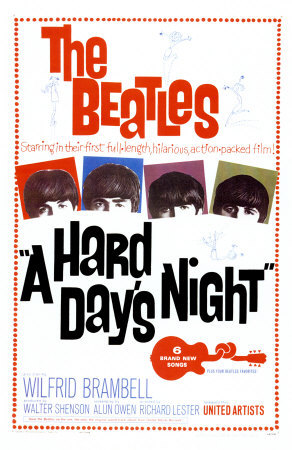 Having completed filming "A Hard Day's Night" on April 24th and taken care of pre-arranged commitments for the following week, manager Brian Epstein arranged for The Beatles to have a well-deserved month off in May to do as they pleased. Paul and girlfriend Jane Asher took off with Ringo and girlfriend Maureen for the Virgin Islands. They charted a yacht named "Happy Days" and enjoyed some (relatively) peaceful times for themselves. "Now that we were in The Beatles, we could affort a boat holiday," Paul writes in his book "The Lyrics." "It was very nice, except when I got a major case of sunburn. One thing the working class like us didn't know about was sunblock. My auntie used to put on vinegar and oil." Having completed filming "A Hard Day's Night" on April 24th and taken care of pre-arranged commitments for the following week, manager Brian Epstein arranged for The Beatles to have a well-deserved month off in May to do as they pleased. Paul and girlfriend Jane Asher took off with Ringo and girlfriend Maureen for the Virgin Islands. They charted a yacht named "Happy Days" and enjoyed some (relatively) peaceful times for themselves. "Now that we were in The Beatles, we could affort a boat holiday," Paul writes in his book "The Lyrics." "It was very nice, except when I got a major case of sunburn. One thing the working class like us didn't know about was sunblock. My auntie used to put on vinegar and oil."
 All the while, Paul knew that they needed to record some songs to flesh out side two of their soundtrack album when they got back. Paul continues: "However agreeable the boat might have been, I liked to go down to my cabin. Somewhere where no one could get to me. I could lock the world out and I'd sit there and strum away for a little while and see if anything came. By this stage I had a really good Epiphone guitar...I started with an A minor chord. A minor to E minor to A minor, which gave me a sort of folksy, whimsical world. And then in the middle, on 'Me, I'm just the lucky kind,' it goes to the major and gets hopeful. The thing I always loved and still love about writing a song is that, at the end of two or three hours, I have a newborn baby to show everyone. I want to show it to the world, and the world at that moment was the people on the boat...I had to remember it, of course, because I didn't write it down. I didn't write down music - because I couldn't. It was all in the head." All the while, Paul knew that they needed to record some songs to flesh out side two of their soundtrack album when they got back. Paul continues: "However agreeable the boat might have been, I liked to go down to my cabin. Somewhere where no one could get to me. I could lock the world out and I'd sit there and strum away for a little while and see if anything came. By this stage I had a really good Epiphone guitar...I started with an A minor chord. A minor to E minor to A minor, which gave me a sort of folksy, whimsical world. And then in the middle, on 'Me, I'm just the lucky kind,' it goes to the major and gets hopeful. The thing I always loved and still love about writing a song is that, at the end of two or three hours, I have a newborn baby to show everyone. I want to show it to the world, and the world at that moment was the people on the boat...I had to remember it, of course, because I didn't write it down. I didn't write down music - because I couldn't. It was all in the head."
 Composing a song in the downstairs cabin of a boat wasn't too favorable, as Paul remembers: "I got away from the main party but it was a bit queasy downstairs; you could smell the oil and the boat was rocking a bit and I'm not the best sailor in the world, so I wrote a little bit of it downstairs and then the rest of it on the back deck where you couldn't smell the engine. I don't know why the engine was on, I suppose we were moving." Composing a song in the downstairs cabin of a boat wasn't too favorable, as Paul remembers: "I got away from the main party but it was a bit queasy downstairs; you could smell the oil and the boat was rocking a bit and I'm not the best sailor in the world, so I wrote a little bit of it downstairs and then the rest of it on the back deck where you couldn't smell the engine. I don't know why the engine was on, I suppose we were moving."
 McCartney wrote this one entirely by himself, as John affirmed in 1980 simply by saying, "Paul's. Good song." It was inspired directly by his relationship with his then girlfriend Jane Asher. Although he injected ambiguity into the lyrics to distance his personal life from the song, with the intention of making it more of "a universal experience that others could relate to more directly" as stated in his book "Many Years From Now," he had in mind the state of their hectic life as a couple. Both Paul and Jane had professional careers that separated them for long periods of time, which resulted in Paul wishing she "weren't so far away." McCartney wrote this one entirely by himself, as John affirmed in 1980 simply by saying, "Paul's. Good song." It was inspired directly by his relationship with his then girlfriend Jane Asher. Although he injected ambiguity into the lyrics to distance his personal life from the song, with the intention of making it more of "a universal experience that others could relate to more directly" as stated in his book "Many Years From Now," he had in mind the state of their hectic life as a couple. Both Paul and Jane had professional careers that separated them for long periods of time, which resulted in Paul wishing she "weren't so far away."
 "It was a slightly nostalgic thing already, a future nostalgia," Paul relates in "Many Years From Now." "We'll remember the 'things we said today,' some time in the future, so the song projects itself into the future and then is nostalgic about the moment we're living in now, which is quite a good trick...It was a sophisticated little tune." "It was a slightly nostalgic thing already, a future nostalgia," Paul relates in "Many Years From Now." "We'll remember the 'things we said today,' some time in the future, so the song projects itself into the future and then is nostalgic about the moment we're living in now, which is quite a good trick...It was a sophisticated little tune."
Recording History
About an hour and a half of recording time in EMI Studio Two was all that was needed to bring the song from beginning to near completion. The first of two sessions on June 2nd, 1964, which ran from 2:30 to 5:30 pm, was used to begin recording John's "Any Time At All," but then switched at approximately 4:00 to start work on Paul's "Things We Said Today."
 The Beatles instrumentation for the initial tracks consisted of John on acoustic guitar, George on electric rhythm guitar, Paul on his Hofner bass and lead vocals and Ringo on drums. "Take one" consisted of a false start, but "take two" and "take three" were full run-throughs of the song, "take three" being the best. Onto this, they performed three overdubs, which consisted of Paul double-tracking his vocals (some in unison and some in harmony), Ringo on tambourine on both bridges of the song, and John playing a simple piano part, also during both bridges. The Beatles instrumentation for the initial tracks consisted of John on acoustic guitar, George on electric rhythm guitar, Paul on his Hofner bass and lead vocals and Ringo on drums. "Take one" consisted of a false start, but "take two" and "take three" were full run-throughs of the song, "take three" being the best. Onto this, they performed three overdubs, which consisted of Paul double-tracking his vocals (some in unison and some in harmony), Ringo on tambourine on both bridges of the song, and John playing a simple piano part, also during both bridges.
 It appears that the piano overdub was recorded simultaneously with the other overdubs but on a separate track, since session sheets show that they decided to omit the piano from the song. To accomplish this, all they needed to do was keep the volume level down on that track to take the piano out of the mix. However, especially when listening to the stereo mix of the song, you can still hear the piano in the background. According to Mark Lewisohn's book "The Beatles Recording Sessions," this occurs because "the piano had not been fully separated" during recording and "a little of its sound leaked across into the other microphones." It appears that the piano overdub was recorded simultaneously with the other overdubs but on a separate track, since session sheets show that they decided to omit the piano from the song. To accomplish this, all they needed to do was keep the volume level down on that track to take the piano out of the mix. However, especially when listening to the stereo mix of the song, you can still hear the piano in the background. According to Mark Lewisohn's book "The Beatles Recording Sessions," this occurs because "the piano had not been fully separated" during recording and "a little of its sound leaked across into the other microphones."
 Documentation exists that suggests that The Beatles arrived around 9:30 pm at EMI Studio Two to record unspecified overdubs for "Things We Said Today" on June 3rd, 1964. This was the same day that they earlier auditioned Jimmy Nicol to replace an ailing Ringo Starr for the beginning of their first world tour. If these documents are true, at least one of the overdubs mentioned above was recorded on this day. Documentation exists that suggests that The Beatles arrived around 9:30 pm at EMI Studio Two to record unspecified overdubs for "Things We Said Today" on June 3rd, 1964. This was the same day that they earlier auditioned Jimmy Nicol to replace an ailing Ringo Starr for the beginning of their first world tour. If these documents are true, at least one of the overdubs mentioned above was recorded on this day.
 George Martin set aside June 4th, 1964 to do mono mixes of all the recent Beatles recordings but somehow neglected "Things We Said Today." He may have run out of time on that day or he just plain forgot this song. Either way, the mono mix we all are familiar with was made during the next mixing session on June 9th, 1964 by George Martin and engineers Norman Smith and Ken Scott. George Martin set aside June 4th, 1964 to do mono mixes of all the recent Beatles recordings but somehow neglected "Things We Said Today." He may have run out of time on that day or he just plain forgot this song. Either way, the mono mix we all are familiar with was made during the next mixing session on June 9th, 1964 by George Martin and engineers Norman Smith and Ken Scott.
 The stereo mix of the song, with the slightly audible John Lennon piano part, was made during the marathon mixing session on June 22nd, 1964. George Martin, Norman Smith and 2nd engineer Geoff Emerick also made a tape copy of this mix at the end of the session, no doubt to send to Capitol Records in the US. The stereo mix of the song, with the slightly audible John Lennon piano part, was made during the marathon mixing session on June 22nd, 1964. George Martin, Norman Smith and 2nd engineer Geoff Emerick also made a tape copy of this mix at the end of the session, no doubt to send to Capitol Records in the US.
.jpg) The Beatles recorded "Things We Said Today" two more times, these being specifically for BBC radio broadcasts. The first was on July 14th, 1964 in Studios B7/S2 at Broadcasting House in London between 7 and 11 pm, this being produced by Bernie Andrews and broadcast on the evening radio show "Top Gear" on July 16th of that year between 10 and 11:55 pm. The second BBC recording of the song was on July 17th, 1964 at BBC Paris Studio in London between 2:15 and 6:15 pm for the fourth episode of their series"From Us To You," which was produced by Bryant Marriott and broadcast on August 3rd, 1964 between 10 am and 12 noon. The Beatles recorded "Things We Said Today" two more times, these being specifically for BBC radio broadcasts. The first was on July 14th, 1964 in Studios B7/S2 at Broadcasting House in London between 7 and 11 pm, this being produced by Bernie Andrews and broadcast on the evening radio show "Top Gear" on July 16th of that year between 10 and 11:55 pm. The second BBC recording of the song was on July 17th, 1964 at BBC Paris Studio in London between 2:15 and 6:15 pm for the fourth episode of their series"From Us To You," which was produced by Bryant Marriott and broadcast on August 3rd, 1964 between 10 am and 12 noon.
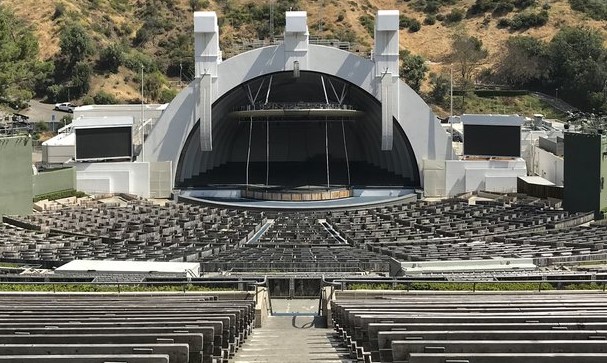 Another recording of the song was made on August 23rd, 1964 during their live concert at the Hollywood Bowl in Los Angeles. With the idea of releasing an American live album in time for the Christmas holiday, Capitol vice-president Voyle Gilmore co-produced a recording of the entire show with George Martin and engineer Hugh Davies on a three-track recording machine. The recordings, which were remixed in stereo on August 27th, were too rough for release at that time, but they were eventually cleaned up by George Martin and engineer Geoff Emerick at AIR London Studios between January 18th and 23rd, 1977, for the successful album "The Beatles At The Hollywood Bowl," which was released later that year. This recording of "Things We Said Today" appeared as the sixth track on side one. Another recording of the song was made on August 23rd, 1964 during their live concert at the Hollywood Bowl in Los Angeles. With the idea of releasing an American live album in time for the Christmas holiday, Capitol vice-president Voyle Gilmore co-produced a recording of the entire show with George Martin and engineer Hugh Davies on a three-track recording machine. The recordings, which were remixed in stereo on August 27th, were too rough for release at that time, but they were eventually cleaned up by George Martin and engineer Geoff Emerick at AIR London Studios between January 18th and 23rd, 1977, for the successful album "The Beatles At The Hollywood Bowl," which was released later that year. This recording of "Things We Said Today" appeared as the sixth track on side one.
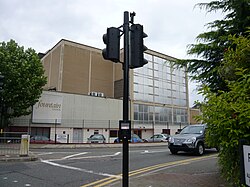 Two live recordings of "Things We Said Today" were made by Paul, the first being on November 2nd, 1989 at the Palacio de los Deportes in Madrid, Spain during his "World Tour," this recording being featured on both of his "Tripping The Live Fantastic" albums from November of 1990. The producer credit for these albums are Paul, Bob Clearmountain and Peter Henderson. The second live recording was an acoustic rendition by Paul and his current band on January 25th, 1991 at Limehouse Studios in Wembley, UK, specifically for his edition of the "MTV Unplugged" series. This rendition, which was listed as McCartney as producer, was omitted from Paul's "Unplugged (The Official Bootleg)" album released later that year, but was featured as the b-side to his 1993 single "Biker Like An Icon." Two live recordings of "Things We Said Today" were made by Paul, the first being on November 2nd, 1989 at the Palacio de los Deportes in Madrid, Spain during his "World Tour," this recording being featured on both of his "Tripping The Live Fantastic" albums from November of 1990. The producer credit for these albums are Paul, Bob Clearmountain and Peter Henderson. The second live recording was an acoustic rendition by Paul and his current band on January 25th, 1991 at Limehouse Studios in Wembley, UK, specifically for his edition of the "MTV Unplugged" series. This rendition, which was listed as McCartney as producer, was omitted from Paul's "Unplugged (The Official Bootleg)" album released later that year, but was featured as the b-side to his 1993 single "Biker Like An Icon."
Song Structure and Style
 As for song structure, we see here a typical 'verse/ verse/ bridge/ verse' (or aaba) format as quite common for the early Beatles catalog. Evidenced also are the common additions to the formula, such as an introduction, a repeat of the bridge and final verse, and a conclusion. With no solo section required, the structure falls into the 'typical' category. This is not to say that there aren't any "tricks up their sleeve," as The Beatles (with George Martin's input) always liked to throw in some "monkey wrenches" to liven things up. As for song structure, we see here a typical 'verse/ verse/ bridge/ verse' (or aaba) format as quite common for the early Beatles catalog. Evidenced also are the common additions to the formula, such as an introduction, a repeat of the bridge and final verse, and a conclusion. With no solo section required, the structure falls into the 'typical' category. This is not to say that there aren't any "tricks up their sleeve," as The Beatles (with George Martin's input) always liked to throw in some "monkey wrenches" to liven things up.
 First of all, a two measure introduction sets the mood, with Lennon's rhythmic fanfare ("da-da-dum") creating an anticipatory tension in an otherwise relaxed minor key. This goes immediately into the first verse, which features Paul's vocal primarily single-tracked except during the third section of the verse (measures 9 through 12), and the final phrase (measures 15 and 16) where the title of the song is heard. These measures are the only times double-tracked vocals are heard in the first verse. First of all, a two measure introduction sets the mood, with Lennon's rhythmic fanfare ("da-da-dum") creating an anticipatory tension in an otherwise relaxed minor key. This goes immediately into the first verse, which features Paul's vocal primarily single-tracked except during the third section of the verse (measures 9 through 12), and the final phrase (measures 15 and 16) where the title of the song is heard. These measures are the only times double-tracked vocals are heard in the first verse.
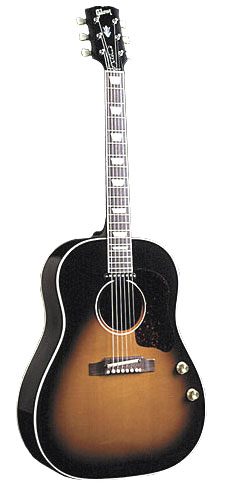 Most can assume (as many books state) that each verse is a standard 16-measures long, but upon examination, none of the four verses heard in this song are of that length. The first verse actually has an additional measure at the end that plays the role of a segue into another verse. This additional measure repeats Lennon's rhythmic fanfare as a brief reprise of the introduction. Most can assume (as many books state) that each verse is a standard 16-measures long, but upon examination, none of the four verses heard in this song are of that length. The first verse actually has an additional measure at the end that plays the role of a segue into another verse. This additional measure repeats Lennon's rhythmic fanfare as a brief reprise of the introduction.
The second verse features Paul's vocal being double-tracked throughout, which shifts from unison to harmony singing in strategic places and apparently whenever the mood would strike Paul at the moment. Besides measures nine through 12, he decides to harmonize during the final line "things we said today." Also noteworthy is that this verse is only fifteen measures long, the final measure disappearing into the bridge.
 This nine-measure bridge "dirties-up" the otherwise tranquil feel of the song with added tambourine, slightly audible piano and urgent, unison vocal work from McCartney. The resulting tension creates an illusion of uncertainty like storm winds threatening to ruin a relaxing boat trip. This tension dissipates with the realization that "love is here to stay and that's enough to make you mine." With these lyrics, the storm abates and we now return to the calm seas of a sunny day (and another relaxing verse). This nine-measure bridge "dirties-up" the otherwise tranquil feel of the song with added tambourine, slightly audible piano and urgent, unison vocal work from McCartney. The resulting tension creates an illusion of uncertainty like storm winds threatening to ruin a relaxing boat trip. This tension dissipates with the realization that "love is here to stay and that's enough to make you mine." With these lyrics, the storm abates and we now return to the calm seas of a sunny day (and another relaxing verse).
 This fifteen-measure verse is identical to the previous verse except for new lyrics. This time Paul sings unison vocals throughout, except for the third phrase ("someday when we're dreaming...") where he switches to harmonizing with himself. This fifteen-measure verse is identical to the previous verse except for new lyrics. This time Paul sings unison vocals throughout, except for the third phrase ("someday when we're dreaming...") where he switches to harmonizing with himself.
This verse transitions into an identical repeat of the turbulent bridge and calm third verse. The repeat of the third verse shows another variation in Paul's vocals where he also adds harmony on the line "we'll go on and on." Another difference in this verse is that the number of measures extends beyond sixteen to infinity as the conclusion fades the song off into the sunset with John's rhythmic fanfare blazing the way.
 McCartney was quite proud of the chord pattern he used for the song. "It has interesting chords," he states. Referring to the second half of the verse, he continues "It goes C, F, which is all normal, then the normal thing might be to go to F minor, but to go to the B flat was quite good. It was a sophisticated little tune." This unexpected B-flat chord creates a measure of uncertainty as to where the song will be leading next, but we comfortably land back into the home key in order to resolve the verse nicely. McCartney was quite proud of the chord pattern he used for the song. "It has interesting chords," he states. Referring to the second half of the verse, he continues "It goes C, F, which is all normal, then the normal thing might be to go to F minor, but to go to the B flat was quite good. It was a sophisticated little tune." This unexpected B-flat chord creates a measure of uncertainty as to where the song will be leading next, but we comfortably land back into the home key in order to resolve the verse nicely.
 Another Beatles trick in "Things We Said Today" is their shifting from minor to major keys, especially notable in the switch from A minor to A major for an interesting transition into the bridge. Also notable is the melody line which is predominantly made up of off-beats, most noticeable in the bridge. The Beatles continued to display this characteristic in later years, such as in "Tell Me What You See" and "If I Needed Someone." Another Beatles trick in "Things We Said Today" is their shifting from minor to major keys, especially notable in the switch from A minor to A major for an interesting transition into the bridge. Also notable is the melody line which is predominantly made up of off-beats, most noticeable in the bridge. The Beatles continued to display this characteristic in later years, such as in "Tell Me What You See" and "If I Needed Someone."
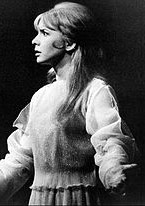 The lyrics of the song depict the singer affirming his love for his girl even though they are separated for long periods of time. The singer is comforted by her assurance that she will love him "till the end of time" and that she'll be "thinking of" him while they are apart. The optimistic lyrics are somewhat melancholy and disquieting with the minor-chord framework of the song as a backdrop. Since this song was an ambiguous reference to Paul and Jane Asher's life at the time, the saddened feel of the song could be viewed in retrospect as a pre-indication of their eventual breakup. His admission that they "may be blind" admits a little uncertainty about how grounded their relationship was, especially with Paul's admitted philandering during The Beatle years. The lyrics of the song depict the singer affirming his love for his girl even though they are separated for long periods of time. The singer is comforted by her assurance that she will love him "till the end of time" and that she'll be "thinking of" him while they are apart. The optimistic lyrics are somewhat melancholy and disquieting with the minor-chord framework of the song as a backdrop. Since this song was an ambiguous reference to Paul and Jane Asher's life at the time, the saddened feel of the song could be viewed in retrospect as a pre-indication of their eventual breakup. His admission that they "may be blind" admits a little uncertainty about how grounded their relationship was, especially with Paul's admitted philandering during The Beatle years.
 Paul's vocals are the main focus of the song, delivering his own harmonies in strategic places through double-tracking (George supplied these harmonies when the song was performed live). McCartney had more of a knack for matching the original vocal recording when double-tracking, this being especially noticeable during times when he may have inadvertently paused on the original track. Lennon was not as instinctively wise when double-tracking, as evidenced in "Tell Me Why," "When I Get Home" and at the end of "Not A Second Time." Paul's vocals are the main focus of the song, delivering his own harmonies in strategic places through double-tracking (George supplied these harmonies when the song was performed live). McCartney had more of a knack for matching the original vocal recording when double-tracking, this being especially noticeable during times when he may have inadvertently paused on the original track. Lennon was not as instinctively wise when double-tracking, as evidenced in "Tell Me Why," "When I Get Home" and at the end of "Not A Second Time."
Paul's bass work, while simple and rhythmic during the verses, becomes more pronounced and intense during the bridges, which is appropriate for the turbulent mood for this section of the song.
 The musical focus of the song is on Lennon's acoustic guitar work, especially his rhythmic fanfare in the introduction, in-between the first two verses and the conclusion. While the rest of John's playing is rudimentary throughout, this fanfare becomes the identifying feature of the song. The musical focus of the song is on Lennon's acoustic guitar work, especially his rhythmic fanfare in the introduction, in-between the first two verses and the conclusion. While the rest of John's playing is rudimentary throughout, this fanfare becomes the identifying feature of the song.
 George Harrison's electric guitar accents, while necessary in the song, are used more for flavoring than for structure. Ringo's drum work resembles a metronome and remains constant and unchangeable throughout the entire song with the exception of his sizzling hi-hat and accentuated beat during the bridges. His tambourine playing during these bridges creates the appropriate dirty atmosphere, which is also reprised with simple accents on the two-beat of each measure during the conclusion. George Harrison's electric guitar accents, while necessary in the song, are used more for flavoring than for structure. Ringo's drum work resembles a metronome and remains constant and unchangeable throughout the entire song with the exception of his sizzling hi-hat and accentuated beat during the bridges. His tambourine playing during these bridges creates the appropriate dirty atmosphere, which is also reprised with simple accents on the two-beat of each measure during the conclusion.
 Capitol's "Something New" album
|
American Releases
While "Things We Said Today" was chosen as the b-side to the single "A Hard Day's Night" in Britain, Capitol had other ideas for the US. In order to more fully promote The Beatles' movie in America, they chose "I Should Have Known Better" as the b-side of this American single.
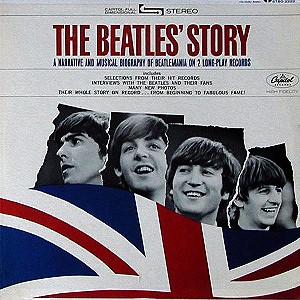 Therefore, the first American release of "Things We Said Today" was on July 20th, 1964, with the release of the Capitol album "Something New." Its prominent place as the second song on the album did well to give it deserved attention in the US. This album got its compact disc release on January 21st, 2014, both the mono and stereo versions of the album being contained on a single CD. Therefore, the first American release of "Things We Said Today" was on July 20th, 1964, with the release of the Capitol album "Something New." Its prominent place as the second song on the album did well to give it deserved attention in the US. This album got its compact disc release on January 21st, 2014, both the mono and stereo versions of the album being contained on a single CD.
A segment of "Things We Said Today" was included in the track "Beatle Medley" on the documentary double album "The Beatles' Story," which was released by Capitol on November 23rd, 1964. Surprisingly, this album was also released on compact disc on January 21st, 2014, but only as contained in the 13 album box set "The US Albums."
 The live performance of the song on August 23rd, 1964 at the Hollywood Bowl in Los Angeles, California was finally released on the Capitol album "The Beatles At The Hollywood Bowl" on May 4th, 1977. The album was eventually remastered by Giles Martin and re-released on September 9th, 2016 under the new title "Live At The Hollywood Bowl." The live performance of the song on August 23rd, 1964 at the Hollywood Bowl in Los Angeles, California was finally released on the Capitol album "The Beatles At The Hollywood Bowl" on May 4th, 1977. The album was eventually remastered by Giles Martin and re-released on September 9th, 2016 under the new title "Live At The Hollywood Bowl."
The first time "Things We Said Today" was paired with "A Hard Day's Night" on a single in the US as it was in Britain was on December 6th, 1982 as featured in the vinyl box set "The Beatles Singles Collection." When this package was released as "The Beatles CD Singles Collection" on November 11th, 1992 and as a reissued vinyl collection titled "The Singles Collection" on November 22nd, 2019, this same single was included.
 The first time the original British "A Hard Day's Night" album was made available in the US was the "Original Master Recording" vinyl edition released through Mobile Fidelity Sound Lab in February of 1987. This album included "Things We Said Today" and was prepared utilizing half-speed mastering technology from the original master tape on loan from EMI. This version of the album was only available for a short time and is quite collectible today. The first time the original British "A Hard Day's Night" album was made available in the US was the "Original Master Recording" vinyl edition released through Mobile Fidelity Sound Lab in February of 1987. This album included "Things We Said Today" and was prepared utilizing half-speed mastering technology from the original master tape on loan from EMI. This version of the album was only available for a short time and is quite collectible today.
 On February 26th, 1987, the complete British "A Hard Day's Night" album was finally released in the US in the compact disc format (the vinyl edition being released on July 21st, 1987), which featured the song in its original mono mix. A remastered stereo version on CD was released on September 9th, 2009, the vinyl edition on November 13th, 2012. On February 26th, 1987, the complete British "A Hard Day's Night" album was finally released in the US in the compact disc format (the vinyl edition being released on July 21st, 1987), which featured the song in its original mono mix. A remastered stereo version on CD was released on September 9th, 2009, the vinyl edition on November 13th, 2012.
 On June 30th, 1992, Capitol released a CD Box set entitled "Compact Disc EP Collection." The mono mix of "Things We Said Today" was included because of its being on the original British EP "Extracts From The Album A Hard Day's Night," which was released on November 6th, 1964. On June 30th, 1992, Capitol released a CD Box set entitled "Compact Disc EP Collection." The mono mix of "Things We Said Today" was included because of its being on the original British EP "Extracts From The Album A Hard Day's Night," which was released on November 6th, 1964.
 A second occurance where "Things We Said Today" was paired with "A Hard Day's Night" as a single in the US was when Capitol released the Cema "For Jukeboxes Only" series in the early '90s. This mono single pressed on white vinyl was released in January of 1994. A second occurance where "Things We Said Today" was paired with "A Hard Day's Night" as a single in the US was when Capitol released the Cema "For Jukeboxes Only" series in the early '90s. This mono single pressed on white vinyl was released in January of 1994.
On December 6th, 1994, the long-awaited "Live At The BBC" album was released, which featured the July 14th, 1964 recording of the song they did for the radio show "Top Gear." On November 11th, 2013, this album was remastered, re-packaged and re-released.
 The box set "The Capitol Albums, Vol. 1," which was released on November 15th, 2004, contains both the mono and stereo versions of the song as first heard on "Something New." Just prior to this release, a rare promotional CD sampler came out that featured both the stereo and mono mixes of "Things We Said Today." The box set "The Capitol Albums, Vol. 1," which was released on November 15th, 2004, contains both the mono and stereo versions of the song as first heard on "Something New." Just prior to this release, a rare promotional CD sampler came out that featured both the stereo and mono mixes of "Things We Said Today."
On September 9th, 2009, the CD box set "The Beatles In Mono" was released, which features a very vibrant remastered mono version of "Things We Said Today." The vinyl edition first came out on September 9th, 2014.
 Also released on September 9th, 2009, in promotion of the remastered Beatles catalog, the "09.09.09 Sampler" was distributed to retailers and radio programmers, "Things We Said Today" being featured therein. This has become quite the find for collectors." Also released on September 9th, 2009, in promotion of the remastered Beatles catalog, the "09.09.09 Sampler" was distributed to retailers and radio programmers, "Things We Said Today" being featured therein. This has become quite the find for collectors."
 Not to be forgotten are two releases of the song by Paul McCartney as performed live during his "World Tour" of September 1989 through July 1990. The albums "Tripping The Live Fantastic" and "Tripping The Live Fantastic: Highlights!" contain the song. In additon, the live acoustic rendition of "Things We Said Today" recorded during Paul's "MTV Unplugged" concert on January 25th, 1991, as detailed above, is featured as the b-side of the Capitol 1993 jukebox single "Biker Like An Icon, which was released on white vinyl. Not to be forgotten are two releases of the song by Paul McCartney as performed live during his "World Tour" of September 1989 through July 1990. The albums "Tripping The Live Fantastic" and "Tripping The Live Fantastic: Highlights!" contain the song. In additon, the live acoustic rendition of "Things We Said Today" recorded during Paul's "MTV Unplugged" concert on January 25th, 1991, as detailed above, is featured as the b-side of the Capitol 1993 jukebox single "Biker Like An Icon, which was released on white vinyl.
Live Performances
 As was the usual practice, The Beatles would focus on promoting both sides of a newly released single with radio, television and concert appearances. This started with filming mimed performances of the song on the British TV show "Top Of The Pops" on July 7th, 1964 at Lime Grove Studios in West London, which didn't get aired until July 29th, 1964. In between these two dates, they mimed the song live on "Lucky Stars (Summer Spin)" on July 11th, 1964. Then they actually performed the song (rather than miming it) on the live British television show "Big Night Out" on July 19th, 1964. As was the usual practice, The Beatles would focus on promoting both sides of a newly released single with radio, television and concert appearances. This started with filming mimed performances of the song on the British TV show "Top Of The Pops" on July 7th, 1964 at Lime Grove Studios in West London, which didn't get aired until July 29th, 1964. In between these two dates, they mimed the song live on "Lucky Stars (Summer Spin)" on July 11th, 1964. Then they actually performed the song (rather than miming it) on the live British television show "Big Night Out" on July 19th, 1964.
 They added "Things We Said Today" to their concert performances when they started their first extensive American tour on August 19th, 1964 at the Cow Palace in San Francisco, California. Upon finding out that the song was not the b-side to "A Hard Day's Night" in America, George began to introduce the song by saying "I think it's on a new album over here," which happened to be called "Something New." They added "Things We Said Today" to their concert performances when they started their first extensive American tour on August 19th, 1964 at the Cow Palace in San Francisco, California. Upon finding out that the song was not the b-side to "A Hard Day's Night" in America, George began to introduce the song by saying "I think it's on a new album over here," which happened to be called "Something New."
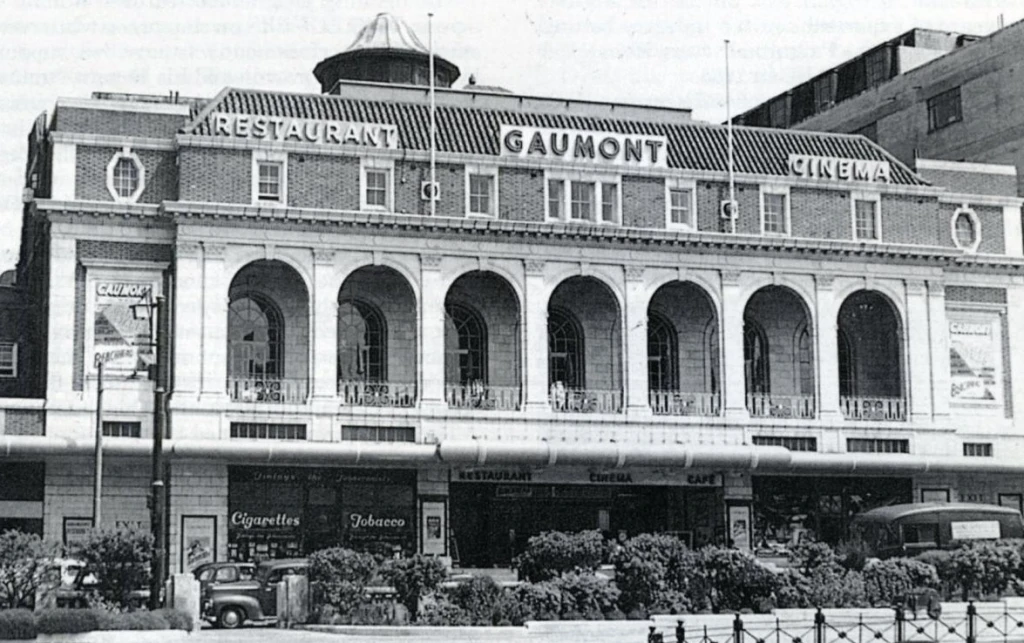 After the group's American tour concluded on September 20th, 1964, they included the song in their British tour (including three dates in Scotland), which ran from October 9th, 1964 at the famous Gaumont Cinema in Bradford to November 10th, 1964 at the Colston Hall in Bristol. After this date, The Beatles were geared up for promoting their upcoming single and album, so "Things We Said Today" vanished from their repertoire forever. After the group's American tour concluded on September 20th, 1964, they included the song in their British tour (including three dates in Scotland), which ran from October 9th, 1964 at the famous Gaumont Cinema in Bradford to November 10th, 1964 at the Colston Hall in Bristol. After this date, The Beatles were geared up for promoting their upcoming single and album, so "Things We Said Today" vanished from their repertoire forever.
 An interesting note is that, during the entire performance life of the song, The Beatles chose to chop off the final eight measures of the last verse, jumping directly to it's conclusion. Although no explanation has even been given, they obviously didn't want the song to "go on and on," this becoming the final phrase of the song. An interesting note is that, during the entire performance life of the song, The Beatles chose to chop off the final eight measures of the last verse, jumping directly to it's conclusion. Although no explanation has even been given, they obviously didn't want the song to "go on and on," this becoming the final phrase of the song.
 As mentioned above, McCartney thought to include the song in his extensive set list for his "World Tour," running from September 26th, 1989 (at Drammenshallen in Drammen, Norway) to July 29th, 1990 (Chicago, Illinois). On January 25th, 1991, as detailed above, Paul and his current band performed an acoustic rendition of the song at Limehouse Studios in Wembley, UK, as part his edition in the "MTV Unplugged" series. He decided to omit "Things We Said Today" in later tours as he began concentrating on digging deeper into The Beatles vault for gems to feature live. However, he did revive it occasionally during his "Out There!" tour, which ran from May 4th, 2013 (Belo Horizonte, Brazil) to October 22nd, 2015 (Buffalo, New York). As mentioned above, McCartney thought to include the song in his extensive set list for his "World Tour," running from September 26th, 1989 (at Drammenshallen in Drammen, Norway) to July 29th, 1990 (Chicago, Illinois). On January 25th, 1991, as detailed above, Paul and his current band performed an acoustic rendition of the song at Limehouse Studios in Wembley, UK, as part his edition in the "MTV Unplugged" series. He decided to omit "Things We Said Today" in later tours as he began concentrating on digging deeper into The Beatles vault for gems to feature live. However, he did revive it occasionally during his "Out There!" tour, which ran from May 4th, 2013 (Belo Horizonte, Brazil) to October 22nd, 2015 (Buffalo, New York).
Conclusion
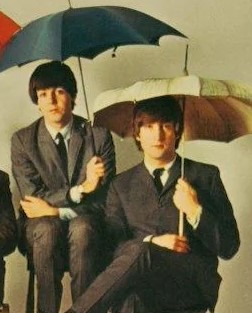 With its ominous mood and somber lyrics, "Things We Said Today" injects a haunting atmosphere into an otherwise optimistic and positive album. This welcome contrast adds color to their pallet, convincingly showing that the Lennon / McCartney songwriting team were much more capable tunesmiths than first thought. With its ominous mood and somber lyrics, "Things We Said Today" injects a haunting atmosphere into an otherwise optimistic and positive album. This welcome contrast adds color to their pallet, convincingly showing that the Lennon / McCartney songwriting team were much more capable tunesmiths than first thought.
Although Lennon's vocal and songwriting presence dominates the "A Hard Day's Night" album, McCartney here shows that, while in a slight compositional rut, he had many new lyrical and melodic tricks up his sleeve for future use. And come 1965 and beyond, his dominance within The Beatles arsenal began to build until it nearly overshadowed his partner. Of course, John wouldn't concede in this competition without a fight. Thus began the partnership/rivalry that spurred them both on to compose what has become the soundtrack to our lives.
Song Summary
"Things We Said Today"
Written by: John Lennon / Paul McCartney
-
Song Written: May 1964
-
Song Recorded: June 2 and 3, 1964
-
First US Release Date: July 20, 1964
-
-
US Single Release: Capitol #ST-17692 (white vinyl)
-
Highest Chart Position: n/a
-
-
Length: 2:38
-
Key: A minor
-
Producer: George Martin
-
Engineers: Norman Smith, Ken Scott
Instrumentation (most likely):
-
Paul McCartney - Vocals, Bass Guitar (1963 Hofner 500/1)
-
John Lennon - Rhythm Guitar (1962 Gibson J160E), Piano (1905 Steinway Vertegrand upright)
-
George Harrison - Lead Guitar (1963 Gretsch 6110 Tennessean)
-
Ringo Starr - Drums (1964 Ludwig Super Classic Black Oyster Pearl), tambourine
Written and compiled by Dave Rybaczewski
|
IF YOU WOULD LIKE TO MAKE A DONATION TO KEEP THIS WEBSITE UP AND RUNNING, PLEASE CLICK BELOW!
Sign Up Below for our MONTHLY BEATLES TRIVIA QUIZ!
|